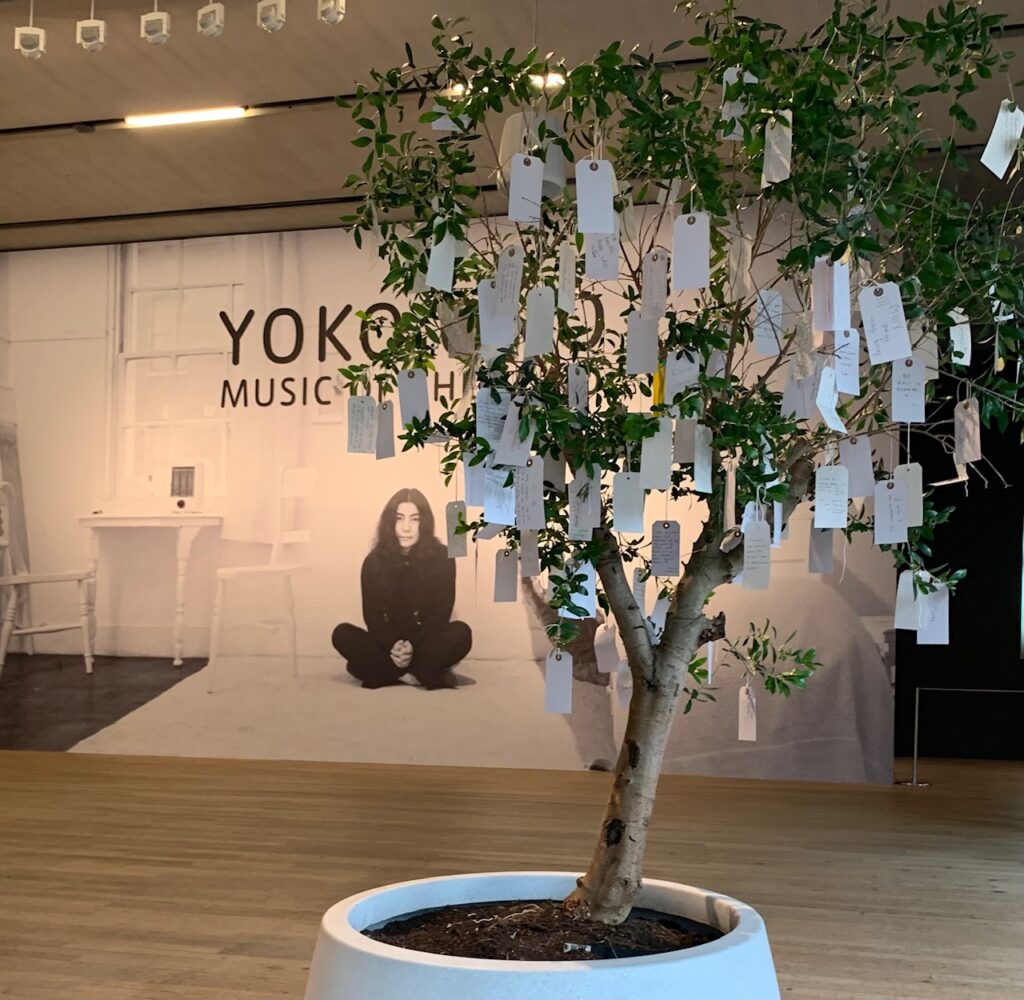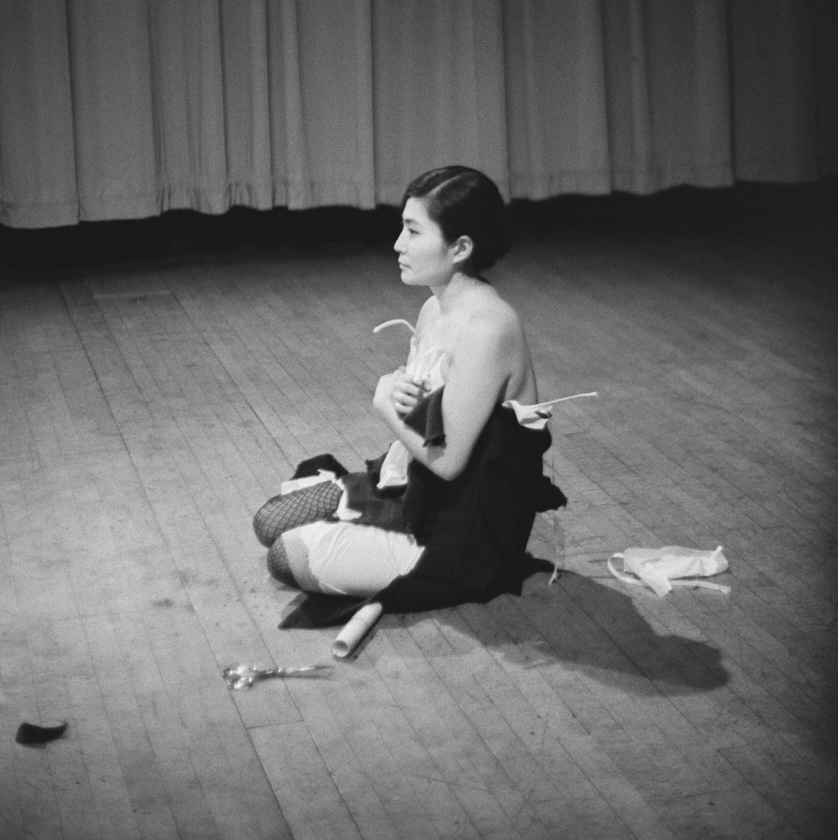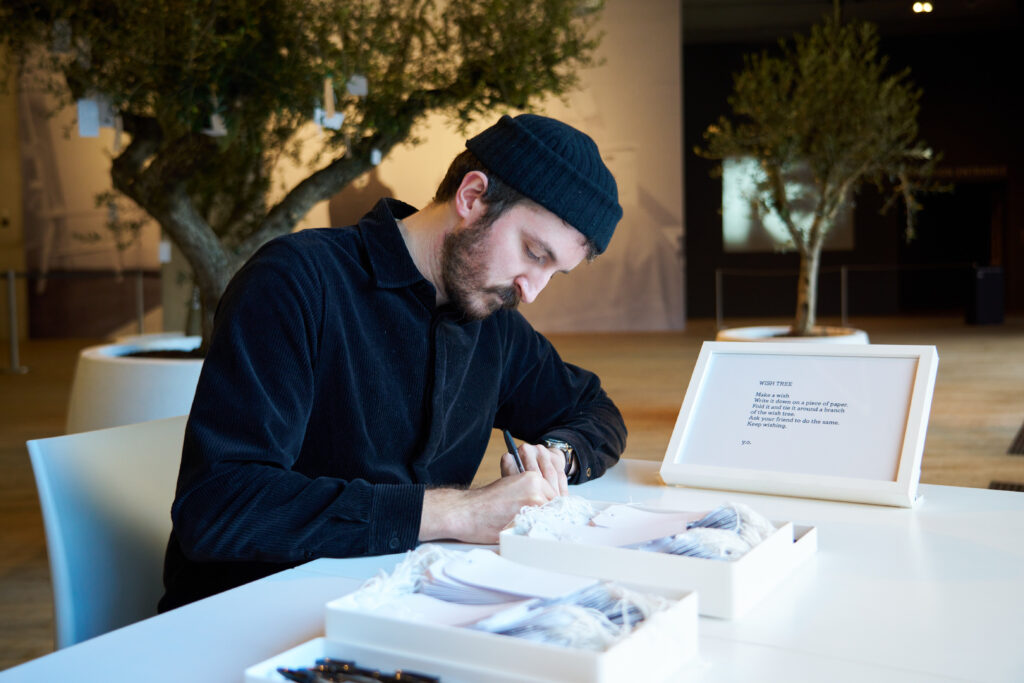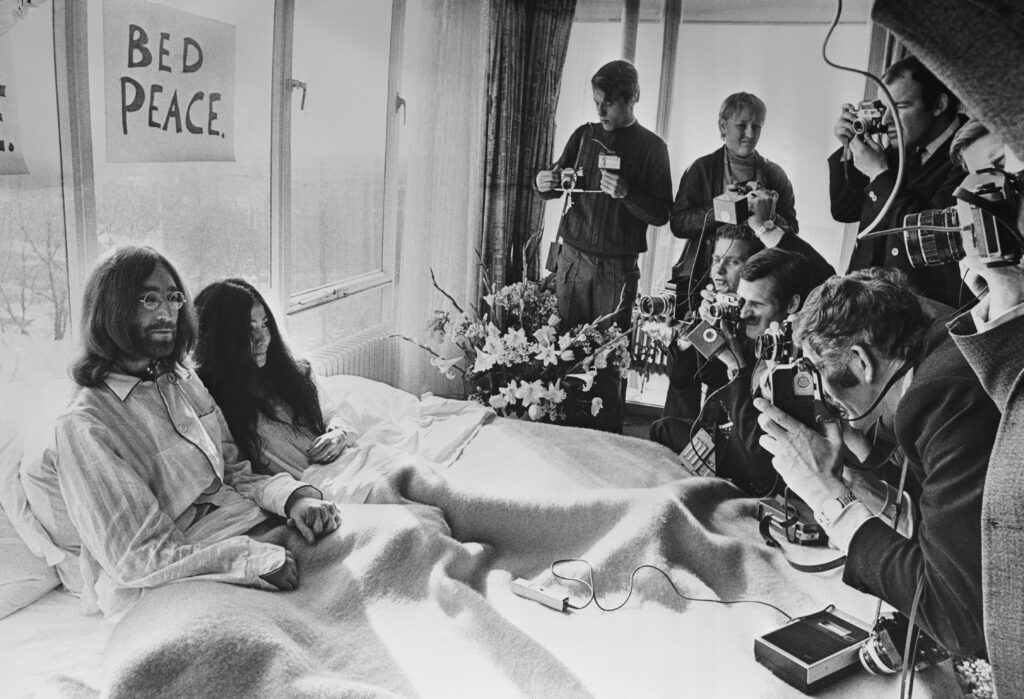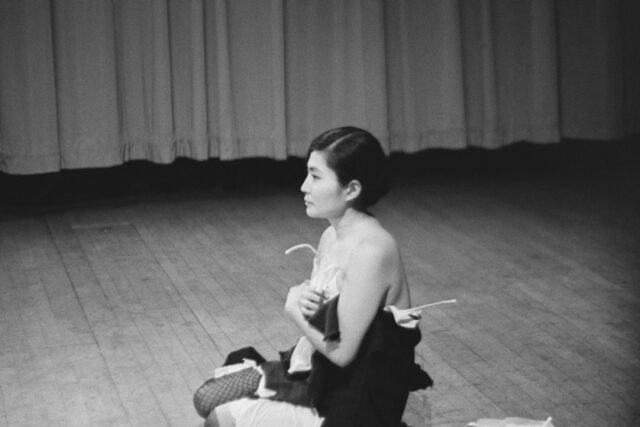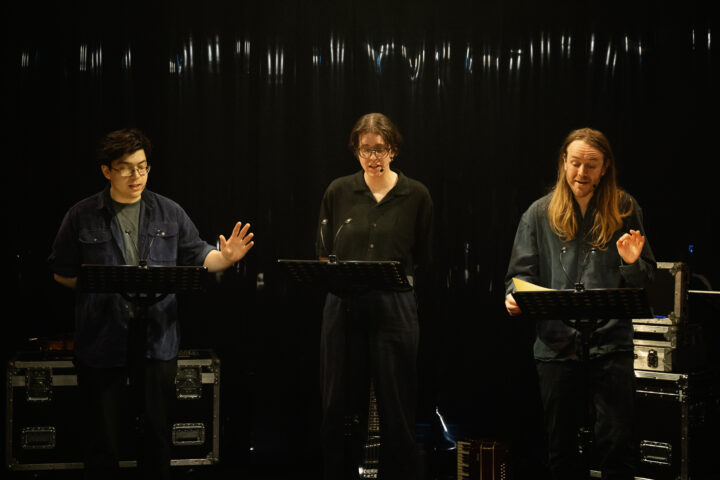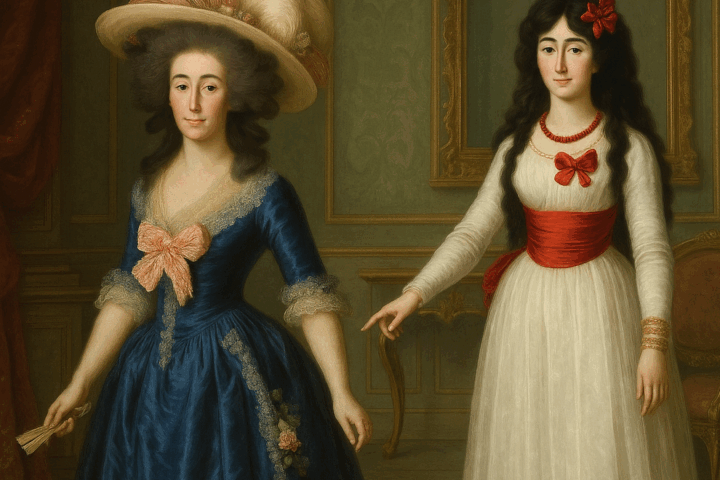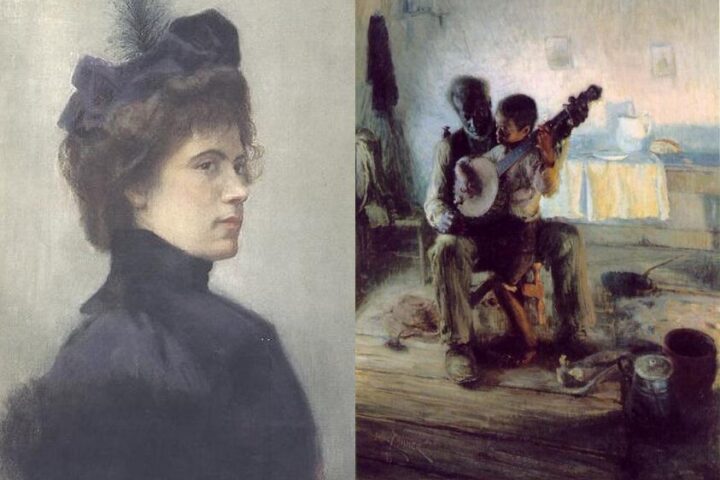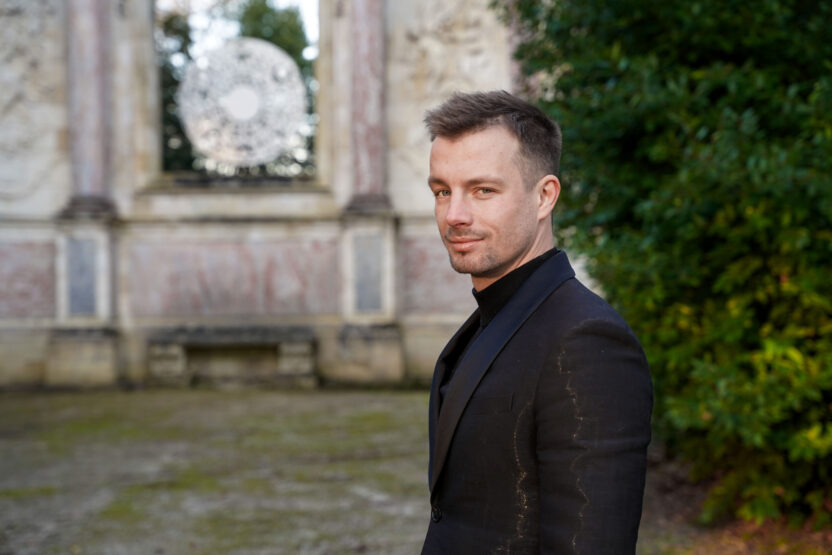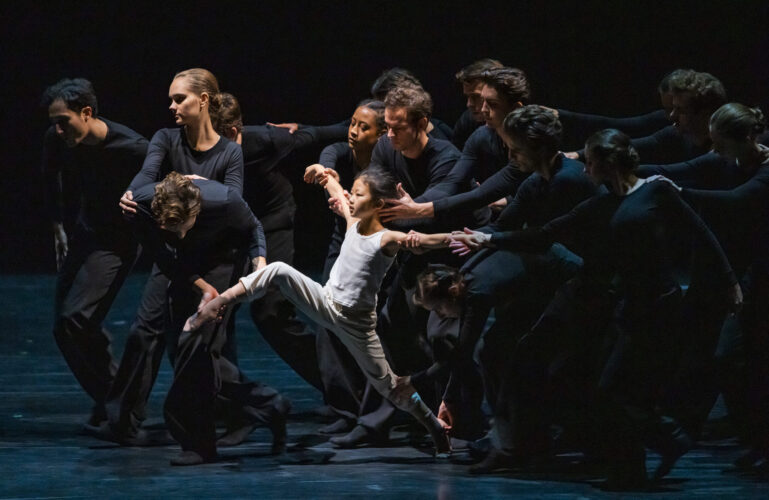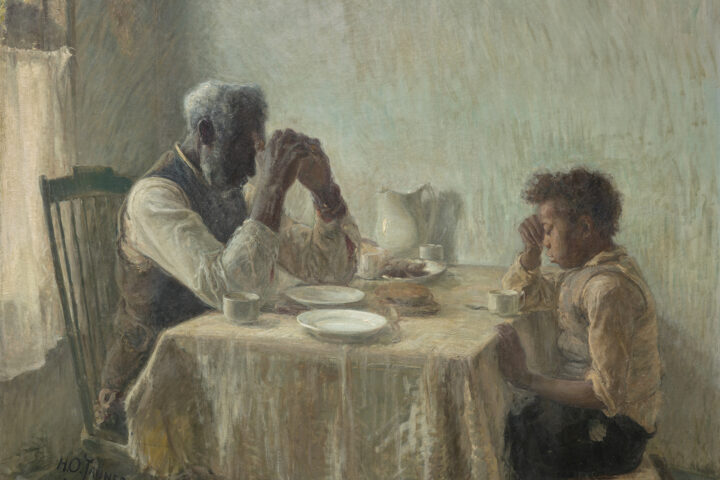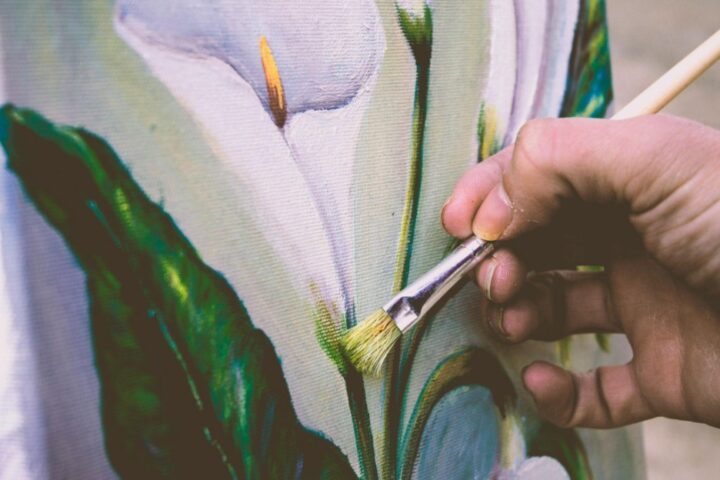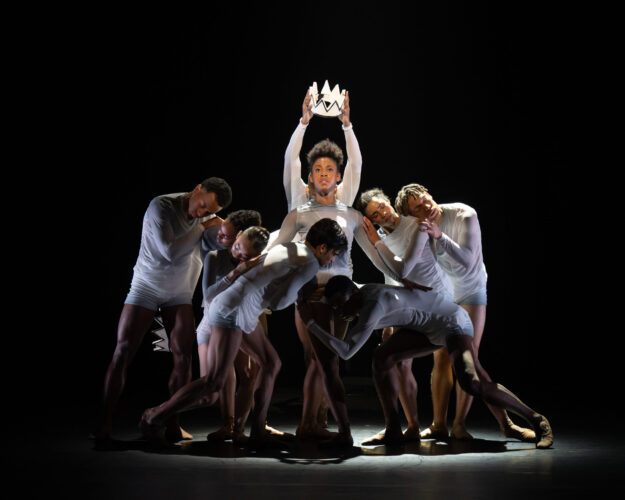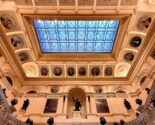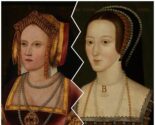Hung in chronological order, the exhibition begins at the very start of Yoko Ono’s career, with photographs from the period when she lived in New York and was deeply involved in the city’s avant-garde movement. This section highlights some of her famous “instruction pieces”—works in which viewers are encouraged to become co-creators. The written instructions invite readers to imagine, experience, or complete the work themselves. Some exist as a single verb, such as “fly” or “touch.” Others take the form of short phrases like “Listen to a heartbeat” or “Step in all the puddles in the city,” and some are more abstract prompts for the imagination, such as Painting to be Constructed in Your Head.
These instruction pieces were created in Ono’s New York loft and include works like Big Bag, in which participants were invited to inhabit a large canvas bag. One of the most famous pieces from this period is Cut Piece, a conceptual work where members of the audience were invited to cut away pieces of Ono’s clothing as she sat silently. A video of an early performance of Cut Piece is particularly illuminating: we see mostly men cutting large swathes of fabric from her clothing, eventually leaving her clutching the few scraps that remain. She appears visibly shaken. The piece seems to highlight the violence that may lie latent within us all. It suggests that once social guardrails are removed and people are given permission to act without constraint, they may behave in disturbing and revealing ways.
